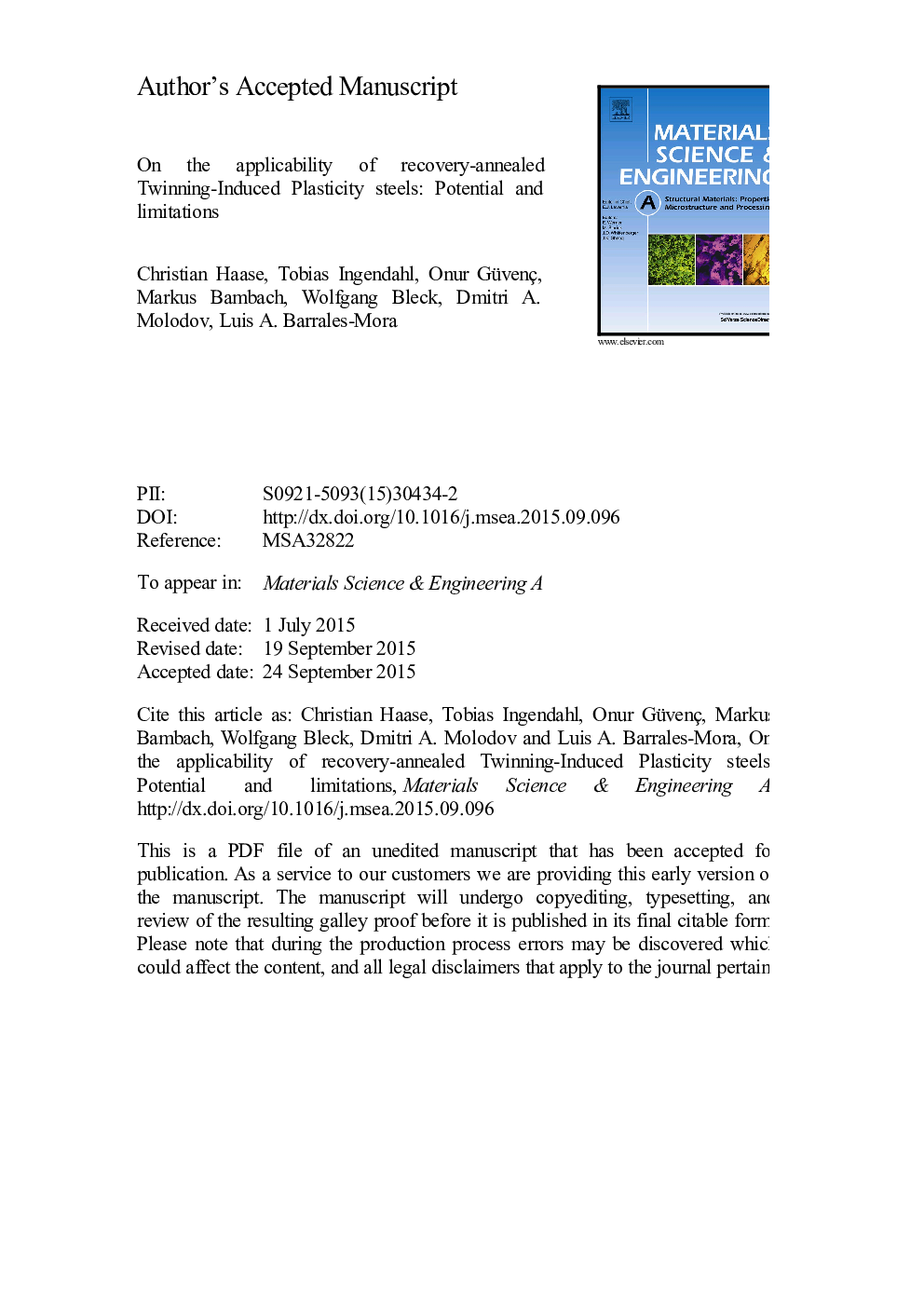| Article ID | Journal | Published Year | Pages | File Type |
|---|---|---|---|---|
| 7976425 | Materials Science and Engineering: A | 2016 | 42 Pages |
Abstract
In this work, two Twinning-Induced Plasticity (TWIP) steels, an Fe-17Mn-1.5Al-0.6C (alloy I) and an Fe-23Mn-1.5Al-0.3C (alloy II), were processed by a simple combination of cold rolling and recovery annealing that resulted in a high yield strength along with appreciable ductility. The potential and limitations of recovery-annealed TWIP steel were assessed by comprehensive mechanical characterization and comparison with a conventional dual-phase Advanced High Strength Steel (AHSS). The energy-absorption capacity, a key parameter for the application of TWIP steel as crash-relevant structural components, was determined by uniaxial tensile testing and dynamic crash testing. The recovery-annealed TWIP material revealed superior properties compared to its fully recrystallized counterparts and to the AHSS due to improvement of the yield strength. These properties can be tailored by varying the chemical composition and the processing parameters. In addition, the formability was investigated using Nakajima and deep drawing tests. Critical issues and limitations of the recovery-annealed TWIP steels are discussed.
Related Topics
Physical Sciences and Engineering
Materials Science
Materials Science (General)
Authors
Christian Haase, Tobias Ingendahl, Onur Güvenç, Markus Bambach, Wolfgang Bleck, Dmitri A. Molodov, Luis A. Barrales-Mora,
